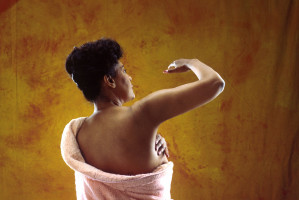
New findings from a clinical trial of women with breast cancer suggest that guided exercise with a physical therapist after lymph node dissection helps women regain their range of arm motion more quickly.
These findings will be presented at the upcoming 2018 Cancer Survivorship Symposium in Orlando, Florida.
“We hope this study brings awareness to the need to follow up with women who have had lymph-node surgery and experience range of arm motion problems as a result,” said lead study author Electra D. Paskett, PhD, professor of cancer research at Ohio State University and Associate Director for Population Sciences at the Comprehensive Cancer Center in Columbus. “Exercise certainly helped most women quickly get back their full range of arm motion, but because most health insurance plans do not cover this type of intervention, there has been little effort to try to find remedies that are effective.”
Almost all women who are treated for breast cancer receive lymph-node dissection, a surgery to remove lymphatic tissue between the breast and underarm.
It can either be sentinel, which involves removing the lymph nodes closest to the tumour, or axillary, which involves removal of additional lymph nodes around the underarm and breast.
When lymph nodes are removed or damaged during surgery, fluid can build up in tissues and cause swelling (lymphedema), which can impair arm movement.
Loss of range of motion can occur soon after surgery and last for many months and is often disabling.
This analysis is part of a phase III randomized clinical trial, the Lymphedema Education and Prevention study, which is looking at whether education, with or without tailored exercise, including a visit to a physical therapist, can help prevent lymphedema in women with breast cancer who have axillary lymph node dissection.
“Most women who have had lymph node dissection get an instruction sheet on exercise after they are discharged from surgery but little else,” said Dr. Paskett. “As a breast cancer survivor myself who experienced swelling after surgery, I thought it was important to try to determine if women were receiving adequate follow-up to deal with certain health issues including the loss of the range of motion in their arms.”
The study randomly assigned 568 women to receive educational materials about signs and symptoms of lymphedema, as well as strategies to reduce risk, or to receive education plus an exercise session with a physical therapist that involved teaching women how to do arm stretching and breathing exercises.
The women received surveys to fill out before their surgery, after surgery, at one year after their surgery, and at 18 months after their surgery, to assess their arm range of motion at five levels -- from very little to full range.
Before surgery, fewer women in the education plus exercise group than in the education only group reported full range of arm motion (left arm: 58% vs 75%; right arm: 57% vs 76%).
While range of motion generally improved over time in both groups, women in the exercise group reported faster improvement.
Specifically, for full range of motion in both arms:
A secondary analysis from the study explored how much the range of motion improved in the affected arm where the surgery was performed.
They found a 32% improvement in range of motion at 12 months in the exercise group compared to a 6% improvement in the education only group and a 37% improvement in the exercise group at 18 months vs a 13% improvement in the education only group.
The authors are working with other investigators to plan a study to look at how variations in surgical techniques could lower the incidence or duration of lymphedema.
They will also be analyzing their data on range of motion to see if body mass plays a role in speed of recovery after lymph node dissection.
Source: ASCO
The World Cancer Declaration recognises that to make major reductions in premature deaths, innovative education and training opportunities for healthcare workers in all disciplines of cancer control need to improve significantly.
ecancer plays a critical part in improving access to education for medical professionals.
Every day we help doctors, nurses, patients and their advocates to further their knowledge and improve the quality of care. Please make a donation to support our ongoing work.
Thank you for your support.